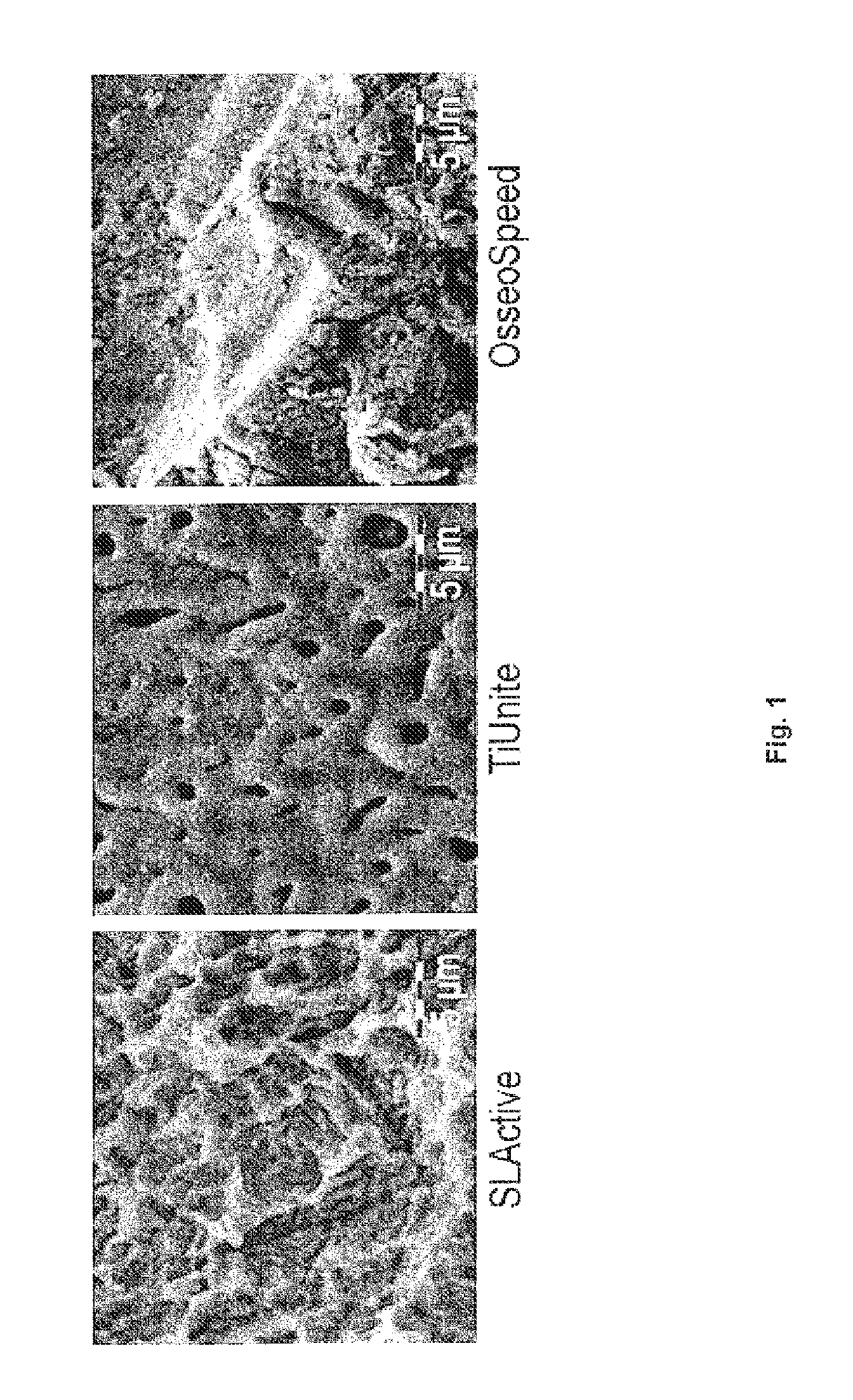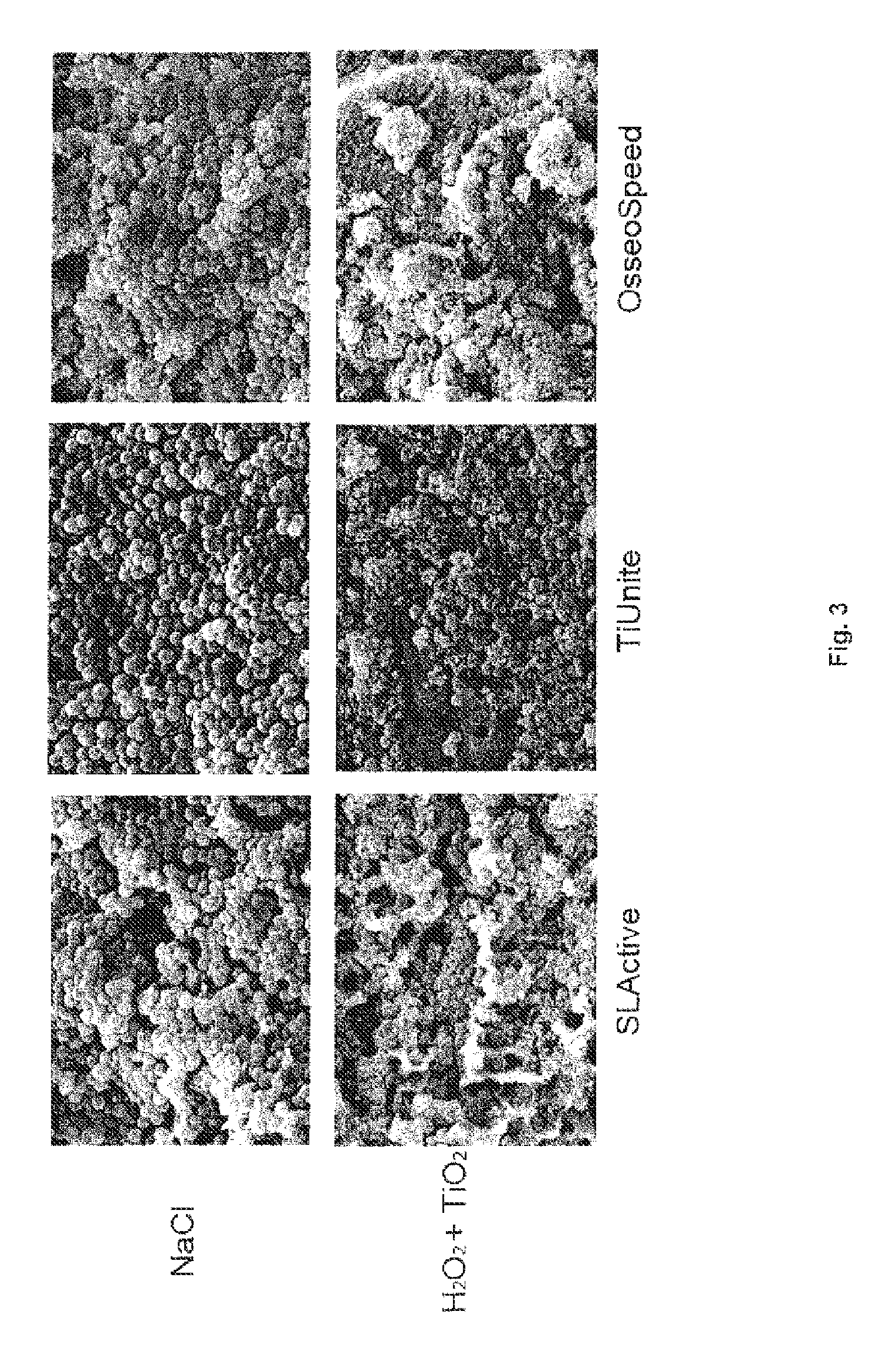Debridement paste
a hard surface and debridement technology, applied in the direction of biocide, plant growth regulators, dental tools, etc., can solve the problems of peri-implant bone loss recognition and treatment a major challenge for the clinician, and the hard cleaning tools are not suitable for cleaning all metallic implant materials
- Summary
- Abstract
- Description
- Claims
- Application Information
AI Technical Summary
Benefits of technology
Problems solved by technology
Method used
Image
Examples
example 1
[0108]Paste for titanium surface debridement:
[0109]A suspension was prepared by adding H2O2 (PERDROGEN® 30% H2O2 (w / w), Sigma Aldritch AS, Oslo, Norway) at 5 vol %, 10 g / L of nanoparticles of TiO2 (Aeroxide P25, Evonik AG, Essen, Germany) and 20 g / L of microparticles of TiO2 (Hombitan, Kronos Titan Worldwide Inc, USA). The mean particle diameter (D50) was measured by laser (Mastersizer 2000, Malvern, Herrenberg, Germany) and the distribution showed a large peak with D50 of 40 nm and a second large peak at 100 μm.
example 2
[0110]Controlling viscosity paste for titanium surface debridement:
[0111]A suspension was prepared as described in Example 1. The viscosity was altered by adding additionally 300 g / L of nanoparticles of TiO2 (Aeroxide P25, Evonik AG, Essen, Germany) and 1000 g / L of microparticles of TiO2 (Hombitan, Kronos Titan Worldwide Inc, USA). The suspension behaved like thick slurry.
example 3
[0112]Controlling viscosity paste for titanium surface debridement:
[0113]A suspension was prepared as described in Example 1. The viscosity was altered by adding 30 grams of a gelling agent polyoxyethylene polyoxypropylene block copolymer (Pluronic® F-127, Sigma Aldritch, Oslo, Norway). The suspension behaved like thick slurry.
PUM
 Login to View More
Login to View More Abstract
Description
Claims
Application Information
 Login to View More
Login to View More - R&D
- Intellectual Property
- Life Sciences
- Materials
- Tech Scout
- Unparalleled Data Quality
- Higher Quality Content
- 60% Fewer Hallucinations
Browse by: Latest US Patents, China's latest patents, Technical Efficacy Thesaurus, Application Domain, Technology Topic, Popular Technical Reports.
© 2025 PatSnap. All rights reserved.Legal|Privacy policy|Modern Slavery Act Transparency Statement|Sitemap|About US| Contact US: help@patsnap.com



